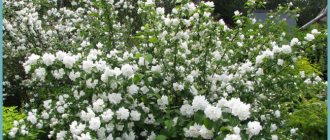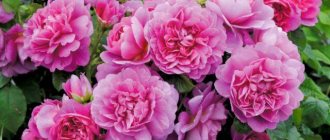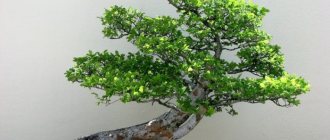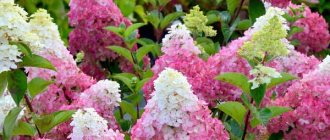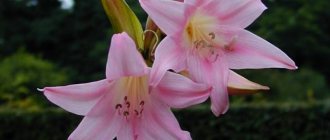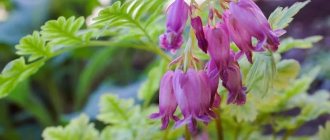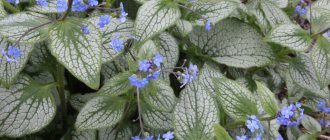0 4799
Thanks to our descriptions, you can choose the thuja that best fits into the landscape of your suburban area. Thuja is a shrub that does not require painstaking care, easily tolerates frost and is a real long-liver among plants in a flower garden or hedge.
Features of the plant
It is not for nothing that this evergreen shrub is called the tree of life - the thuja lives up to 150 years, or even more. The homeland of the thuja plant is the northern continent of America or East Asia. Thuja wood is a storehouse of essential oils, so it is not surprising that some types of this shrub were burned during pagan rituals as sacrifices to the gods.
Thuja has 5 species and more than 100 varieties. They differ in bark color, crown shape, height, and trunk diameter. In gardening, this evergreen shrub grows no higher than 11m. Young plants are decorated with soft, pale green needles. Thuja fruits are small oval cones with flat seeds that ripen in the first year.
Pros and cons of flowering
Flowering is a physiological process that is necessary for a plant to reproduce. During this process, pollen is released and pollination occurs, resulting in the formation of fruit-cones containing seeds, which can later be used to produce young trees.
However, flowering and fruiting of the described plant often leads to a decrease in the decorative value of the tree. Therefore, landscape design manuals recommend removing flowers and cones from flowering thujas mechanically by trimming them.
Important! Thuja pruning should only be done with disinfected garden tools. To avoid infection by diseases and pests, you should not use the same trimming devices on different plants without disinfection.
Like all conifers, thuja blooms in spring in an original way - its flowers have an inconspicuous appearance and no aroma. This is a natural process that occurs when the plant reaches the state. It has a bad effect on the decorativeness of the conifer. To preserve the beauty of the tree, it is recommended to do pruning, during which the flowers are removed.
Planting thuja in open ground
Thuja trees and shrubs prefer light areas, but without direct sunlight for a long time. If you ignore this fact and plant the thuja on the sunny side without the ability to hide in the shade at midday, the plant will withstand winter frosts worse. In addition, thuja does not like drafts.
Thujas also have special soil preferences. They grow best in turf soil with the addition of peat and sand, but sandy loam, marshy soil or clay are also suitable.
You can plant shrubs in open ground in spring and autumn, but experts remind you that if you plant thuja in open ground in autumn, you risk losing the plant due to the fact that it will not have time to get stronger and, as a result, will not survive the winter.
If you doubt whether you dug a hole for planting of the right size, then here is a hint: the hole for the thuja should be 30 cm in height and 40 cm in width larger than the root system of the seedling taken with a lump of soil. As for the distance between seedlings, everything can be calculated here too:
- If you plan to plant thujas in a group, then the seedlings should be separated from each other at a distance of approximately ½ of the maximum possible width of the branched part of the bush. If the plant is crowded, it will begin to compete with each other and fight for space, sun and nutrients. To properly plant seedlings, find out the maximum crown size for a given variety. For example, the crown of the western thuja variety Brabant reaches 1.5 m in diameter.
- If you plan to plant thujas in a hedge, then follow the same principle - adapt the distance between seedlings to the size of adult shrubs. But in this case, to form a hedge, plant the plants closer to each other than with group plantings. You will get a dense wall of thujas if you plant 3-4 seedlings per 1 linear meter. For example, western thujas grow slowly, so it is recommended to plant them at a distance of 60cm from each other. If a small and weak specimen gets into a group planting, it will most likely be drowned out by healthier ones.
Thujas love areas that have been previously cleared of perennial weeds - nettles, thistles, weeds.
Pour soil into the bottom of the hole and mix it with manure or compost. Before planting, thuja roots should be kept in water until air bubbles stop rising to the surface of the water. Place the seedling in the center of the hole and carefully straighten the root system. Fill the hole with soil and compact it carefully. After planting, thuja should be watered generously, approximately two buckets per seedling (20 liters). When the water is absorbed, mulch the surface to slow down the evaporation of moisture from the soil and protect the root system of the thuja from heat or cold (to prevent the thuja from starting to rot, avoid getting mulch on the trunk and lower branches).
Biological description
Thuja is an evergreen plant covered with specially shaped needles . The tree has a dense crown and a relatively small root system, rarely exceeding 1/5 of the trunk length. The needles of the plant are small, no more than 3-4 mm in length; it covers the branches with slight overlap, which creates the illusion of scales.
The lifespan of needles is 2-3 seasons, after which they fall off, but not just one scale falls off, but an entire section of the branch falls off at once, and its color may not change.
Thujas have the ability to change their color during the winter, usually becoming more faded.
However, sometimes the rule is broken, and there are varieties that look more colorful and elegant in winter than in summer.
Thuja variety Elvangeriana in winter. In summer it is light green
Thuja occidentalis flowers are typical small cones of coniferous plants containing two seeds. They are not very decorative and, in general, gardeners do not like them.
It is believed that a lot of cones appear when the plant’s growing conditions are somehow unsatisfactory.
Thuja occidentalis cones
In gardening, thuja is divided according to crown type:
- Columnar (high cones or columns - maximum proximity to cypress trees)
- Hemispherical
- Globular
- Weeping
One of the main features of the western thuja is its frost resistance. All its varieties tolerate frosts down to -25-30°C, and some varieties overwinter even at -40°C without any shelter.
Caring for thuja in the garden
Watering
Thuja loves abundant watering, especially in the first weeks after planting. Thujas also love sprinkling. This process allows the roots to become saturated with water and remove contaminants from the needles. The roots of the thuja are superficial, so loosen the soil no deeper than 10 cm.
Top dressing
Apply complex mineral fertilizers (for example, Kemira universal fertilizer 50-60g/1m2) in the spring.
If you have already applied fertilizers to the soil when planting, then the next fertilizing should be carried out only after two years.
Trimming
Thuja responds well to the pruning process and will repay you with splendor and density in response to this procedure. It is carried out when the bush reaches two to three years. Spring is the most favorable time of year for pruning. Shrubs growing as hedges especially need systematic pruning. Thinning and sanitary pruning are also necessary for single plants. If the thuja grows in a group planting, then formative pruning is used so that the bushes do not look sloppy. The crown of the thuja needs to be formed when the bush reaches the height you need. This is usually done for the first time in the spring and trimmed again in August/September. Some varieties of thuja need frequent shaping, but no more than a third of the stem at a time, so that the bush does not weaken. Use sharp pruning shears for pruning.
Transfer
It happens that you need to transplant an adult thuja. To make such a transplant easy for the plant, follow the following rules:
- Pierce the soil around the tree with a bayonet-shovel at a distance of half a meter from the trunk;
- Carefully pry up the plant and pull it out along with the trunk circle;
- Use a wheelbarrow to move the plant to its new location so that the soil around the root system does not disintegrate.
And one more rule that applies to mature large trees. If you plan to replant it in the future, then pierce the soil around the trunk a year before the planned replanting. This will allow the plant to grow young roots that will not go beyond the border that you have drawn, which, in turn, will prevent any soil around the roots from crumbling during transportation and replanting.
Thuja blooming
Thuja blooms in mid-spring, in April. The flowering of the thuja plant does not last long - only a couple of days. Where there were flowers, cones appear, in which, after ripening, seeds appear. Ripe seeds fall off in the fall, but if you can’t wait to return the tree to its previous appearance, you can cut off the cones yourself.
Fast growing varieties
The record holders for growth speed are mainly tall trees: Brabant (up to 30 cm per year), Columna (up to 15 cm), Fastigiata (up to 30 cm).
Golden Brabant
Thuja Golden Brabant (pictured) has yellow needles, but grows no less quickly than its green counterpart - plus 20-30 centimeters per season.
Vareana
Thanks to the addition of 20 cm per year, it quickly reaches its final height - 6-7 meters.
Degroot Spire
The height, like the previous one, is up to 7 meters, but the growth is even faster - 25 centimeters per season!
Amber
Bright yellow tree up to 5 meters (average - 3). With proper care, in suitable soil it will add 20 cm.
Diseases and pests
The enemies of thuja are Fusarios, brown schutte and cytospora. These fungal diseases affect both the stem and needles. To cure a shrub, you should treat it with Cartocide or Bordeaux mixture. Spraying is carried out in early spring twice a month until the plant is completely healthy.
Aphids and false scale insects like to settle on thuja. This will immediately become visible by the fact that the needles will turn yellow and then die. These pests are afraid of Rogor, Karbofos and Decis. In the middle of summer, you need to treat the plant twice (with a break of half a month) with Chlorophos or Actellik.
The rhythm of the seasonal development of thuja
In the spring, thuja experiences 2 phases - budding and flowering. The beginning of the first phase is characterized by an increase in the size of the flower bud, the second - by the blooming of the flower. Each of these phases requires a corresponding temperature. Thuja buds bloom 10-12 days after the onset of an average daily minimum temperature of 5°C, an average daily temperature of 10°C and a maximum of 10-20°C for 5-10 days. If the minimum temperature decreases, the blooming period may drag on for another 5 days. Spring frosts often destroy anthers. Pollination at this time is also usually hampered by winds and rains. The difference in flowering time in different zones depends on the growing conditions of the thuja. In Kyiv, thuja blooms in the first half of April, in Leningrad - in early June, in Trostyanets - in the first half of May. Flower buds are laid after the shoots have finished growing in September - early October. They are located on the tops of the side shoots of the current year in the axils of the leaves. The seeds ripen in the flowering year in September-October immediately after the growth of young shoots stops. The average duration of the growing season in different years in the same places is not the same, for example, in Kyiv for the western thuja it varies from 169 to 176 days in different years. Leaf fall in thuja is observed after 5-6 years at the end of the growing season and continues until the beginning of October (35-50 days). The resting period for the eastern thuja is 101 days, the giant thuja is 118 days, and the western thuja is 121 days. Phenological observations have shown that in the same place under the same growing conditions, the same phenophase does not occur simultaneously in each of the thuja species. This is due to the meteorological conditions of each growing season.
Reproduction of thuja
Plants of the cypress thuja family reproduce by vegetative and seed methods. A species plant can be propagated on your property by seeds, but a varietal plant can only be propagated by cuttings and dividing the bush (varietal characteristics are not preserved in the seeds).
Propagation by seeds
If you decide to propagate this shrub using seeds, then be patient, because this process may take you 3-5 years. Sow only freshly harvested seeds. From autumn to spring, place them under the snow outside or in the refrigerator so that the seeds undergo the stratification process. Sow in spring in open ground half a centimeter deep, covered with a thin layer of pine sawdust. Cover the planting from direct sunlight with shields and ensure that the soil is always loosened and moist. The bed with sprouted seeds should be mulched with peat and fertilized every two weeks with mineral fertilizer. During the first winter, young 7-8 centimeter thujas should be covered with spruce branches and film. Transplantation to a permanent place of residence is carried out in the third spring.
Propagation by cuttings
Cuttings need to be prepared at the beginning of summer. 2-3 year old lignified stems (25-40 cm) are suitable for this. Do not cut the cuttings, but carefully pull them out, treating the tearing area with a solution of Heteroauxin. Plant the cutting 3 cm deep in a mixture of peat, turf and sand taken in equal proportions. This mixture should be treated with potassium manganese for disinfection. Cover the cuttings with polyethylene and ventilate and harden only after they are completely rooted. Closer to winter, insulate young plants with sawdust or spruce branches. And although thuja is a coniferous plant, at 7-degree frost it should be covered with film.
Growing
Commercial cultivation of thuja
Thuja occidentalis is an extremely unpretentious plant to care for. main growing conditions can be listed in one sentence - desirable, but not required: light, watering and alkaline soil.
In principle, the conditions of a temperate climate will be quite enough for the plant to feel relatively good and even bear fruit. But, to ensure a good appearance, you should still take care to create conditions for the thuja.
Site requirements
Thujas can grow in sunny areas or in partial shade. Only a few varieties of thuja can tolerate shade normally. Plants need moderately nutritious soil with good loosening and a low groundwater level.
If the groundwater level is high, it is advisable not only to use drainage, but also to use high beds, or even container growing.
Thuja covered on both sides by the walls of the house
The plant, despite its frost resistance, does not like winds very much in its youth, so it is advisable to plant thuja in places protected from them. This will not affect the health of the plant in any way, however, constant winds can lead to improper formation of the plant’s crown.
Watering and fertilizing conditions
Western thuja is watered a little, but relatively often . Typically, the time between waterings is several days, and the volume of watering is from 10 to 20 liters, depending on the height of the tree. Some trees require spraying the needles once a week to retain moisture.
The plant can tolerate drought, however, this negatively affects its decorative effect . The growth of horizontal branches may stop, the growth cone will begin to stretch, and the phase of active fruiting will begin.
Thujas are very popular in landscape design
Once a year, usually in the spring, the plant is fed with fertilizers . Preference is given to organic ones; for example, it is recommended to remove a layer of soil 8-10 cm thick within a radius of 1 m from the trunk and completely replace it with humus. You can get by with mineral fertilizers; phosphorus-potassium fertilizers are best suited for this purpose.
Their use increases the acidity of the soil, so it is recommended to give the required dose to the plant not immediately, but gradually, over 1 month. And at the end of the fertilizing course, lime the top layer of soil using ash.
Soil requirements
Dry loams are most suitable for thujas . They should be moderately nutritious, loose and not sour. Acidic soils require liming. The normal pH level for thuja occidentalis is between 6 and 8.
If the soil is not satisfactory according to some criteria, you can dig a hole under the thuja into which a suitable substrate and fertilizers are poured. The size of this hole is determined by the growth of an adult thuja.
A plant 3-5 m high will need a hole in the form of a cube with an edge of 1 m, while a plant about 2 m high will require a hole of the same cubic shape, but with an edge of 60 cm.
Ready-made soil mixture
If clay soil predominates on the site, then the soil mixture is obtained from half the excavated soil and the same amount of peat . If the soil is sandy, a third of the excavated soil remains, and the same amount of peat and turf soil is added to it. Peat soil is similarly supplemented with loam and sandstone.
However, do not rush and mix the entire volume. Firstly, the hole will contain the root system of the plant, secondly, drainage, occupying from 1/8 to 1/6 of the volume, and thirdly, half of the soil mixture will be organic fertilizer - humus, compost or rotted manure.
Therefore, to prepare the soil mixture, you will need to use approximately ¼ of the excavated soil and take all other components based on this amount.
Planting thuja
Be sure to put drainage in the form of crushed stone or broken brick at the bottom of the hole; The thickness of the drainage should be approximately 1/6 of the depth of the hole. The finished soil mixture is mixed with organic fertilizer and the tree is planted in a hole, ending with watering.
There is no need to compact the soil. This amount of fertilizer will last for about 2-3 years, after which you can start feeding it.
A little about reproduction
Thujas can reproduce both vegetatively and using seeds. However, due to objective circumstances (poor quality of material, self-pollination, low germination), the seed propagation method is used only for selection in nurseries, where there are means for its normal implementation.
Therefore, the more preferable method of propagating thuja is using cuttings . Cuttings are taken in November and germination begins in zip-top plastic bags. In this way, “greenhouse” conditions are created for the cuttings.
The cutting is placed in a bag where the soil is prepared for it (1 part leaf soil and 1 part sand); It is watered once with boiled water and left for a month in a dark place in a closed bag.
Harvesting thuja cuttings before rooting
After a month, the cuttings develop roots and are transplanted into a pot with soil, like an adult plant. The pot is placed in a sunny area and they begin to take care of it: water it every two days, protect it from drafts and loosen the soil.
As soon as the young plant is strong enough, it is planted in open ground.
Thuja in winter at the dacha
The bushes are prepared for wintering in the fall: they stop watering and fertilizing.
A young decorative thuja (less than 5 years old) needs shelter from spruce branches for the winter. But before this, experienced gardeners hill up the plant and mulch with peat. Mature plants do not need shelter.
If you live in an area where there is heavy snowfall in winter, then in order to prevent injury to the branches of the plant, the crown should be tied with twine in the fall. And in February, in order to protect a plant that has become weaned from it over the winter from intense sun, cover it with non-woven material.
Due to sharp temperature changes in spring, cracks sometimes appear on the bark. They can be covered with garden varnish.
Graft
Not many gardeners prefer to bother with thuja, but in vain. After all, by grafting new branches, you can create a completely new, unique type of thuja that looks great and is also expensive if you grow the plant for commercial purposes. And the process of grafting thuja is not the most difficult.
As a scion, use thuja cuttings that are 1 year or less. The process itself is best carried out in August. To do this, you will need to make an incision on the mother thuja, place your cutting in it, treat the grafting site with a healing agent and secure it firmly with ordinary rope (or improvised means).
Grafting will be successful only if you graft a cutting of the same species (just a different variety). Otherwise, failure will await you.
Additionally, wrap the grafting site with cling film so that moisture does not escape from the tree through the incision. Leave the plant alone for a couple of years, and only then it will sparkle with new colors.
Types and varieties of thuja
A description of the most popular varieties of thuja will help you choose exactly the one that will look best in your flower garden. The variety of thuja is simply amazing.
Type of thuja trap. This species is native to eastern North America and eastern Canada. In nature it reaches almost 30 m. This common species became the ancestor of more than 120 varieties of thuja:
- Smaragd is a universally recognized best variety with a narrow conical crown that retains its shape over the years. Reaches almost 3 m. The needles retain their green color even in winter. They look impressive in a hedge.
- Golden Smaragd is a derivative of the Smaragd variety. Thuja Golden reaches a height of 2 m. The variety is colored golden-yellow, so the western thuja variety Smaragd Golden is intended for the sunny side.
- Brabant is a well-known variety that is mainly used to create living fences. It grows quite quickly and has a column-shaped crown. The green needles at the tips are colored golden.
- Golden Globe - has the shape of a ball. Thuja variety Golden Globe has green needles, colored golden yellow at the tips of the shoots. Closer to cold weather, the whole plant takes on a copper tint. Grows slowly - 10 cm/1 year.
- Heather-shaped (Eriсoides) – heather-shaped thuja is a relatively young variety. This shrub, more like a juniper, reaches 1 m in height. At the top, the greenery has a golden hue.
- Pancake – this dwarf thuja is a wonderful resilient variety. Thuja occidentalis variety Pancake reaches a height of only half a meter. She endures winter without shelter. Its spherical crown does not turn yellow from sunlight, but turns blue in autumn and winter. Looks great in rock gardens and rockeries.
- Maria (Mariya) - this variety has a conical shape, grows slowly - 20cm/1 year. Thuja occidentalis variety Maria does not change its golden yellow color throughout the year. Looks good both in single plantings and in a hedge, container, or on the balcony. The variety is resistant to fungal diseases. Choose a sunny location for planting.
- Golden Hills (Golden Tuffet) - the needles below and inside are light green, and above - yellow-green-red. Reacts well to pruning. In winter, it may not withstand the load of snow, so it is better to tie it up. Thuja occidentalis variety Golden Hills loves sunny places and looks harmonious in flower arrangements.
- Golden-tipped (Aureospicata) - this variety deserves its name because the dark green needles acquire a golden color at the ends in summer. Thuja occidentalis variety Zolotistokonchikovaya can grow in the shade and is not picky about soil. The variety is resistant to frost. Looks good in a hedge, single or group planting.
- Tip Top - this shrub is very compact: 0.8 m in height and 0.3 m in width. The crown has a spherical shape. The dark green dense crown is not afraid of sunny places, as well as drought and frost. But what the western thuja variety Tip Top does not like is the spring sun, from which it gets burned, especially in young plants. Therefore, it is better to cover them. Looks good in single plantings and borders.
Thuja orientalis species. The homeland of this species is China, or more precisely the mountains in northern China. The symbol of Beijing are specimens that are supposedly about 1000 years old. The most common varieties of oriental thuja:
- Book - this decorative variety is very valuable and popular in the eyes of gardeners. It grows slowly - 10 cm/1 year, reaching an average of 3 m in height. Looks good in a hedge against the background of dark spruce and yew needles. Thuja book loves heat, so it should not be grown north of Voronezh.
- Golden Minaret - This thuja with bright yellow needles loses its color in the shade, so to maintain its individuality, plant it in a sunny place, but avoid wind and drafts.
- Pyramidalis - an adult specimen has a columnar shape. It reaches a height of 4 m and a width of 1.5 m. It grows well in the shade, so if you don’t know what to plant against the wall of a house or under a tree, Thuja Pyramidalis will help you with this.
- Morgan – Australian botanists worked on developing this variety. In summer the plant is lemon green in color, and in winter it is red-orange. The crown is dense and pyramidal. Does not require special formation.
- Justinka (Justinka) - this dwarf thuja comes from Poland. The crown grows in the shape of a column. Justinka is resistant to frost.
- Aurea Nana (Aurea Nana) is a decorative slow-growing variety 10 cm/1 year. Like other low-growing thujas, Aurea Nana can decorate any area. This variety looks attractive due to the golden color of the crown.
- Melldensis (Melldensize) - has an ovoid crown shape. The green-blue needles darken in winter. This blue thuja looks amazing on the site.
Korean thuja species. This species is a rare visitor to landscape areas; more often it can be found in greenhouses. The natural environment of this species is Korea and China, and there, in the natural environment, arboreal forms of this species are more often found. Slow growing species 3m/10 years. The color of the needles is pale green, white-silver underneath, due to which the Korean thuja always looks elegant. Frost-resistant species, loves moist, rich soils.
Type of thuja foldata. In nature, this tree reaches enormous sizes - up to 60 m (hence the second name of the species - giant thuja). The needles are green with a white stripe on the underside. Due to the height of this species, it is planted mainly in parks.
Thuja japonica species. From the name it is obvious where this species comes from - from Japan, or rather from its central part. The Japanese love for attaching sacred significance to plants led to the fact that the Japanese thuja was banned from being cut down. The wild plant reaches 20m, the cultivated plant reaches 9m. Green needles have a matte finish. The species is frost-resistant, but does not like drought.
Description
When Europeans first arrived in the area where thujas grow, it was not the aesthetic properties of the plant that they liked. They were much more attracted by the quality of thuja occidentalis wood, so already at the beginning of the 16th century the first samples of the plant were sent to Europe.
Thuja occidentalis. Wild form
But the Europeans were unlucky with industrial timber extraction. Europe found itself with a completely different climate; in addition, no one even paid attention to the fact that thuja is calciphilic by nature. Europeans stubbornly tried to grow a plant created for alkaline soils on acidic soils.
Naturally, in this case there could be no question of any 30 meters in height - the plants grew by a maximum of 3-4 meters in 10 years.
However, after seeing what Europe got out of the North American guest, no one thought of refusing her. The fact is that the low-growing plants were very beautiful, but, most importantly, they resembled cypress trees, which are their closest relatives.
And, what was the key point, unlike heat-loving cypresses, thujas felt great in the frosty climate of northern Europe.
Cypress Alley
Further work with thujas included almost 400 years of breeding work, which can be called very successful. Several hundred varieties of western thuja have been bred, intended for landscape design in almost all its manifestations and forms.
It is difficult to find an object in a garden or park into which (or next to which) it would be impossible to fit a thuja in any of its forms.
Thujas trimmed to fit small architectural forms
There was even a separate genre of art - topiary. The main “material” from which topiary masters create their masterpieces is thuja crowns.
Thujas tolerate pruning well and feel only better from this procedure - light and air from outside can penetrate more freely into the crown.
Combination of thuja with other plants in landscape design
Most plants visually go well with thujas, but not all are suitable for joint planting under the conditions necessary for normal growth.
It is important that roots of different types are not located in the same layer of soil.
It is also better not to place thujas and fruit plants nearby, as their productivity is often reduced.
Thujas do not combine well with willow, birch, peonies, dahlias, rose hips, and lilacs.
Next to all conifers, species that need alkaline soils, but do not want abundant watering, grow poorly.
Thuja can be planted next to roses if you first make a rose garden, and after 2-3 years, when the flowers have already formed a powerful root system, plant thuja at a distance of 1.5 m. In one year, ground cover roses and dwarf varieties of thuja can be planted in the flowerbed .
Also grow well with thujas:
- herbaceous perennials;
- decorative flowering light-loving plants - irises, daisies, phlox;
- junipers and hostas;
Thuja with hostas - shade-loving periwinkle and geranium next to tall and medium-growing varieties of thuja;
- bulbous - scillas, daffodils, crocuses.
Shrubs with moderate growth and similar requirements for growing conditions are also suitable for joint planting, for example: barberry, bladderwort, hydrangea, astilbe and spirea.
1. Thuja occidentalis Smaragd (Smaragd) 2. Ottawa barberry 3. Tree hydrangea Annabelle (Annabelle) 4. Bergenia 5. Astilbe 6. Hosta Pretty Flamingo (Pretty Flamingo) 7. White-edged hosta
1. Thuja occidentalis Smaragd (Smaragd) 2. Thuja occidentalis Golden Globe (Golden Globe) 3. Spiraea japonica Little Princess (Little Princess) 4. Spiraea japonica Golden Princess (Golden Princess) 5. Thuja occidentalis Danika (Danika)
Protecting thuja during flowering
Immediately after planting, the plant treats its environment with caution. Winter can have negative consequences. The crown is subject to drying out, the brightness of the needles dims significantly.
In spring, thuja is exposed to sunlight. Therefore, when the first sun appears, it is better to protect the plant. If the tree is damaged, you can use the Epin solution. The plant may turn yellow due to excessive alkali content in the soil. Therefore, the soil for planting must be prepared correctly; it is best to add peat to it.
